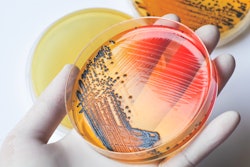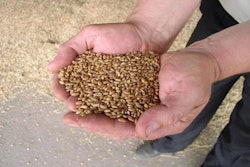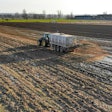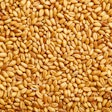
Macro trends and new technologies to shape the future of feed production
If Elon Musk of Tesla or the founders of Uber or Netflix were given responsibility for today’s feed industry, what would they do?
Referencing the old joke of someone asking for directions in Ireland, who is answered with, “Well, I wouldn’t have started from here,” seems appropriate here. The reality is that the global industry has 28,000 feed mills that, given what they know, would never start their “journey” from where they are now.
Many run their operations at barely 50% of capacity, factories occupying sites that are in the wrong place for proximity to their customers and may be more valuable being used for other purposes. Much of the equipment is humorously described as “being held together by duct tape,” given its age, and they require more people than is economical in a labor-restrained market.
What is clear is that it is a business designed around real estate, metal and too many suppliers for a market which is increasingly commoditized.
How can the feed industry be disrupted, transformed, re-invented?
Unlocking genetic potential
We all appreciate that the feed production systems of the future will become implicitly intertwined with technology and eventually allow data to flow throughout the entire food chain, e.g. where the farm, the feed mill, the processing plant and the consumer are seamlessly connected. In this way, feed availability will mirror consumer and animal demands in real time and, in doing so, dramatically increase efficiency and reduce waste.
Genomic and nutrigenomic approaches will become standard for understanding nutritional and environmental factors hindering production efficiency, environmental impact and welfare.
Nutrigenomics is key to understanding the impacts different nutrients have on gene expression and provide the basis for more rational genetic selection. Subsequently, feeds will be closer to achieving genetic potential by targeting genes involved in animal growth rate, disease prevention, environmental impact and meat quality.
Role of data, automation
The feed mill, itself, will be smarter with the use of real-time data. This allows for the analysis of incoming raw materials in real time, allowing reformulation of the diets on a minute-by-minute basis to ensure consistency of each batch. Additionally, rapid, in vitro digestion modeling systems for monogastric and ruminant animals will provide new ways of defining the true nutritional value of raw materials as well as the final feed products leaving the feed mill.
While typical Western feed mill producing 100,000 tons of feed might involve 1 to 4 people, the same feed mill in the developing world may require 45 individuals. The trend toward greater labor efficiency will continue and future feed mills will increasingly become species specific and fully automated, such that a single person could run a relatively large feed mill alone. Advances in the pelleting process will ensure precision here also.
What about on the farm?
As previously discussed, notion of “the three feeds” — i.e. the one formulated, the one manufactured and the one the animal eats — will converge as the need to be precise in our feeding. All ingredient digestibility, moisture content and, not least, how nutrients are consumed, will be measured and observed using sensors, and this data fed back into the system.
Ubiquitous technologies on the horizon
Here’s a glimpse at the technologies shaping the feed production of the future:
- Farm sensors including cameras detect the real-time nutritional needs of livestock and measure real-time responses in terms of physiological and performance parameters.
- Combination of information from market demands, feedback from the processing plant and nutritional profiles of harvested ingredients, all also in real time.
- AI-based algorithms formulating basic feeds and nutritional supplements.
- Feed manufactured to order by toll mills, automated and robotized to ensure consistency. Supply choice based on distance and production efficiencies rather than prior human relationships.
- Functional nutritional supplements added to feed on the farm, customized to real-time animal needs.
What does this mean for your feed mill, premixes and feed additives? What is the vision for the allied industry of feed equipment, analytics and formulation software? How does it disrupt the traditional careers in the business?
What would Musk say or do?
The future of the feed industry lies in its ability to meet consumer demands for safety and sustainability, while still becoming even more efficient and productive to feed 10 billion people in 2050. Consolidation of the more than 28,000 feed mills will continue — probably reducing numbers by 3% a year — compounded to half of the current number 10 years from now.
Analytical technologies, such as broad-spectrum NIR, advanced in vitro fermentation modeling, nutrigenomics and bioinformatics will intervene in feed formulation so that nutritional value is defined and feed formulation and feed manufacturing is no longer an art, but a precise digital science.
The quote of Elon Musk’s that “some people don’t like change, but you need to embrace change if the alternative is disaster” might seem a dramatic given the feed industry’s almost 200-year history. But watching how other industries have been disrupted by technology and data demonstrates the odds that business will continue as before aren’t in our favor.
Editor’s note: In July 2021, Feed Strategy will launch its “Feed Mill of the Future” series. Keep an eye out for upcoming related news and events.


















